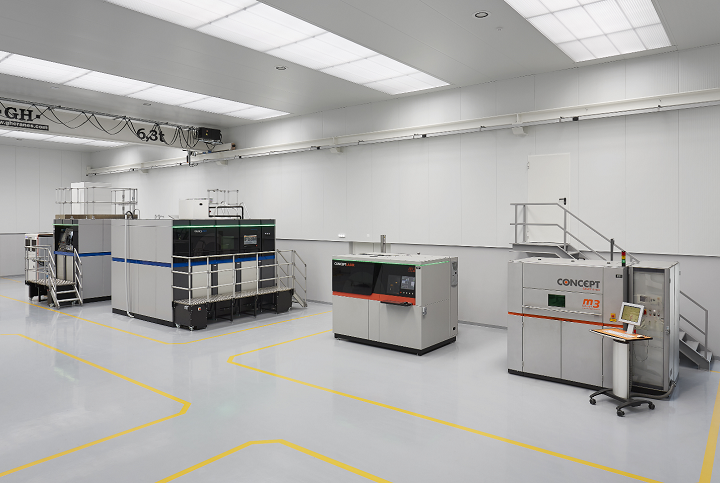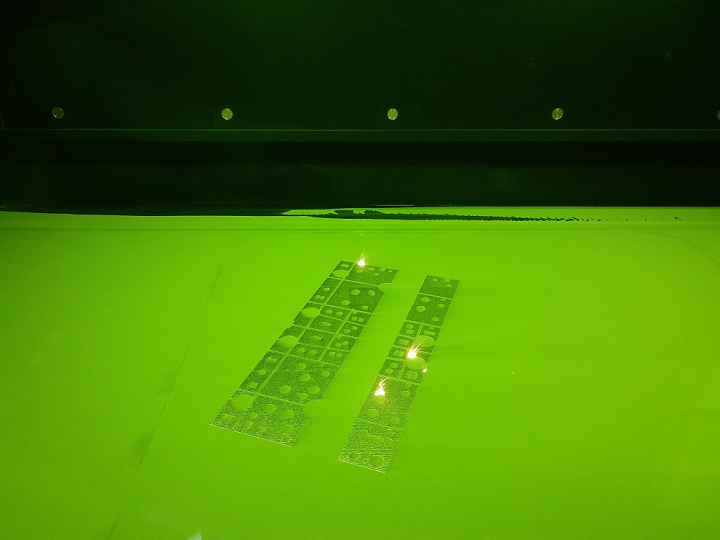Industrial molding company EROFIO Group was chosen to test out the GE Additive Concept Laser M Line system before it is officially released later in 2021. As EROFIO has long used GE Additive’s Direct Metal Laser Melting (DMLM) technology for its work in the thermoplastic injection molding industry, it makes sense that this company was the one selected to exercise the printer’s abilities. The system has been installed at EROFIO Group’s mold making facility in central Portugal for less than three months, and already positive results have been announced, as the company recently 3D printed its first Mold Core on the M Line.
“We are honored to be part of GE Additive’s thorough commercial readiness process. We’re learning a lot from them and I think it’s safe to say they are learning a lot from us and our first impressions working with the M Line,” stated EROFIO Group’s metal additive manufacturing leader Luís Santos. “Having the first part come off our system is a great milestone and we’re looking forward to supporting the wider team as the solution comes to market and beyond.”
One advantage in 3D printing the part is that EROFIO Group can achieve more efficient heat exchange, as the technology’s geometric design freedom makes it possible to add conformal cooling. Improved cooling reduces the cycle time and warpage, which in turn increases productivity of the plastic injection process and improves the aesthetics of the injected plastic part.
3D printing also allowed EROFIO Group to decrease its finishing requirements by 90% and reduce the amount of total manufacturing time. When compared with more conventional manufacturing, using the M Line to print the Mold Core saved 30% on time, from powder all the way to final mold assembly.

Left: 3D CAD drawing of the final geometry. Right: Internal 3D view of the Core to be printed with the eight independent conformal cooling channels.
M300 hot work tool steel, which is typically used to produce functional components and tool inserts for injection molding and die-casting with conformal cooling, is the material that EROFIO Group chose to print the Mold Core out of, and the very first attempt was successful. The printing process took six days, once the company received remote optimization support from GE Additive’s Bavaria team.
“We fully expected the first part to be printed on the M Line to go well. And when it did there was a rush of excitement felt across the entire team here in Lichtenfels,” said Jan Siebert, GE Additive’s General Manager of laser technologies. “Work continues here in Germany on the M Line, ahead of the launch, and we will factor in additional feedback from the team at EROFIO.
“It is critically important that when GE Additive brings new solutions to market, it can tangibly and immediately demonstrate business impact. Our M Line system operates at higher levels of reliability and repeatability, meeting customers’ needs from day one. This is not a science experiment and we are not developing laboratory equipment. Overly ambitious claims and incomplete specifications in other vendors’ product launch announcements only serve to undermine the trust that our wider industry has collectively built in metal additive technology in recent years.”
Santos and the rest of his team had plenty of experience already with GE Additive’s Concept Laser M2, and decided to use a parameter for the test build that had already been developed for the M2 Series 5 system. To adapt the parameter for printing the Mold Core on the modular M Line, they only had to change it up a little bit.
The part, which stretches out over eight meters in length and between five and eight millimeters in diameter, features more than eight independent, internal conformal cooling channels, and was successfully printed on the first try.

Additively manufactured Mold Core using hot-work tool steel, printed on a GE Additive Concept Laser M LINE system
“We have a solid working relationship with the team at EROFIO that goes back well over a decade,” Wolfgang Lauer, GE Additive’s Concept Laser M Line Product Manager, stated. “As we near a critical phase in commercializing the M LINE system, we specifically sought out a trusted partner to gain early installation experience, data and honest customer feedback.”
The GE Additive Concept Laser M Line system is scheduled to be commercially available later this year.
(Source/Images: GE Additive)
Subscribe to Our Email Newsletter
Stay up-to-date on all the latest news from the 3D printing industry and receive information and offers from third party vendors.
Print Services
Upload your 3D Models and get them printed quickly and efficiently.
You May Also Like
3D Printing News Briefs, July 2, 2025: Copper Alloys, Defense Manufacturing, & More
We’re starting off with metals in today’s 3D Printing News Briefs, as Farsoon has unveiled a large-scale AM solution for copper alloys, and Meltio used its wire-laser metal solution to...
Etsy Design Rule Change Reduces Selection of 3D Printed Goods
Online marketplace Etsy has implemented a rule change requiring all 3D printed goods on the site to be original designs. The update to the site’s Creativity Standards states, ¨Items produced using...
Siraya Tech Introduces New Elastomer 3D Printing Materials, Including Foaming TPU
California company Siraya Tech, founded in 2019 with a focus on material science, customer focus, and agility, develops high-quality 3D printing materials that meet the needs of creators, hobbyists, and...
3D Printing News Briefs, April 12, 2025: RAPID Roundup
The news from last week’s RAPID+TCT in Detroit just keeps on coming! That’s why today’s 3D Printing News Briefs is another RAPID Roundup of more exciting announcements from the trade...



































